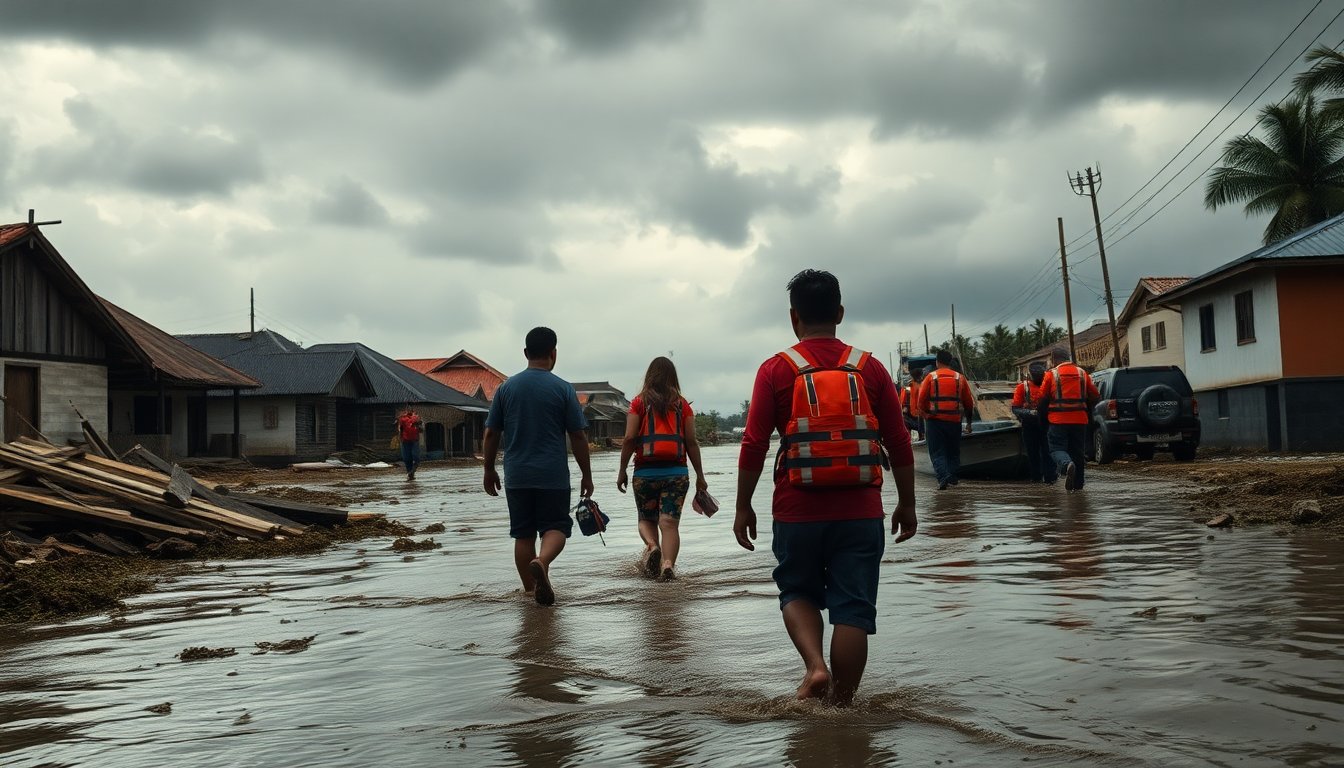Table of Contents
The Philippines is facing another natural disaster as Super Typhoon Fung-wong strikes the northeastern coast. Just days after Typhoon Kalmaegi caused significant loss, resulting in over 200 fatalities, the nation now contends with this new storm. Fung-wong’s powerful winds and heavy rainfall have compelled more than a million residents to evacuate from areas at high risk.
Impact and evacuation efforts
Authorities braced for the impending typhoon, which is projected to impact a significant portion of the archipelago, extending approximately 1,800 kilometers (about 1,118 miles) in width. Reports confirm that at least two fatalities have occurred, with severe flash floods and landslides affecting regions such as Catanduanes and Catbalogan.
Philippine President Ferdinand Marcos Jr. has declared a state of emergency due to the extensive destruction caused by Typhoon Kalmaegi, alongside the expected turmoil from Typhoon Fung-wong. Known locally as Uwan, this storm features maximum winds of 185 km/h (115 mph) and gusts reaching 230 km/h (143 mph), creating conditions conducive to significant flooding and landslides.
Government response
In response to the imminent disaster, officials have urged residents to follow evacuation warnings. However, some individuals have chosen to stay in their homes, creating dangerous situations that have required extensive rescue operations. A notable example involved a team successfully rescuing 14 people trapped on the roof of a house surrounded by floodwaters.
The Secretary of National Defense, Gilberto Teodoro Jr., has highlighted the necessity of relocating to safer areas, stating, “When it’s already raining or the typhoon has hit and flooding has started, it’s hard to rescue people.” As the storm approached, schools and government offices were closed, and flights were canceled to prioritize public safety.
Forecast and future concerns
The Philippine Atmospheric, Geophysical and Astronomical Services Administration (PAGASA) warns that the storm is likely to weaken after making landfall but will continue to pose significant risks as it moves across Luzon, the country’s most populous island.
Experts predict that some areas may receive over 200 mm of rain, leading to heightened concerns about potential flooding and landslides.
In the coastal province of Aurora, local authorities have begun evacuating residents to shelters, implementing safety protocols. The urgency of the situation is evident, as many evacuees recall the devastating impact of past disasters, notably Typhoon Haiyan, which resulted in over 6,000 fatalities in 2013.
Community resilience
The emotional impact of these storms is significant, forcing families to face the fear of losing their homes and loved ones. As community members gather in shelters, narratives of anxiety and hope emerge. One evacuee, Norlito Dugan, articulated his determination to safeguard his family amidst the chaos brought by the storms.
In preparation for future storms, the Philippine government has activated emergency response protocols. These measures aim to ensure timely delivery of aid, including access to emergency funds and rapid provision of essential services to affected areas.
The ongoing struggle against natural disasters
The Philippines continues to grapple with the impact of natural disasters, facing approximately 20 tropical cyclones annually. This challenge is exacerbated by climate change, making the country one of the most disaster-prone regions in the world. The recent arrival of Typhoon Fung-wong highlights the resilience required from both communities and government agencies as they work to recover and rebuild in the aftermath of such events.





